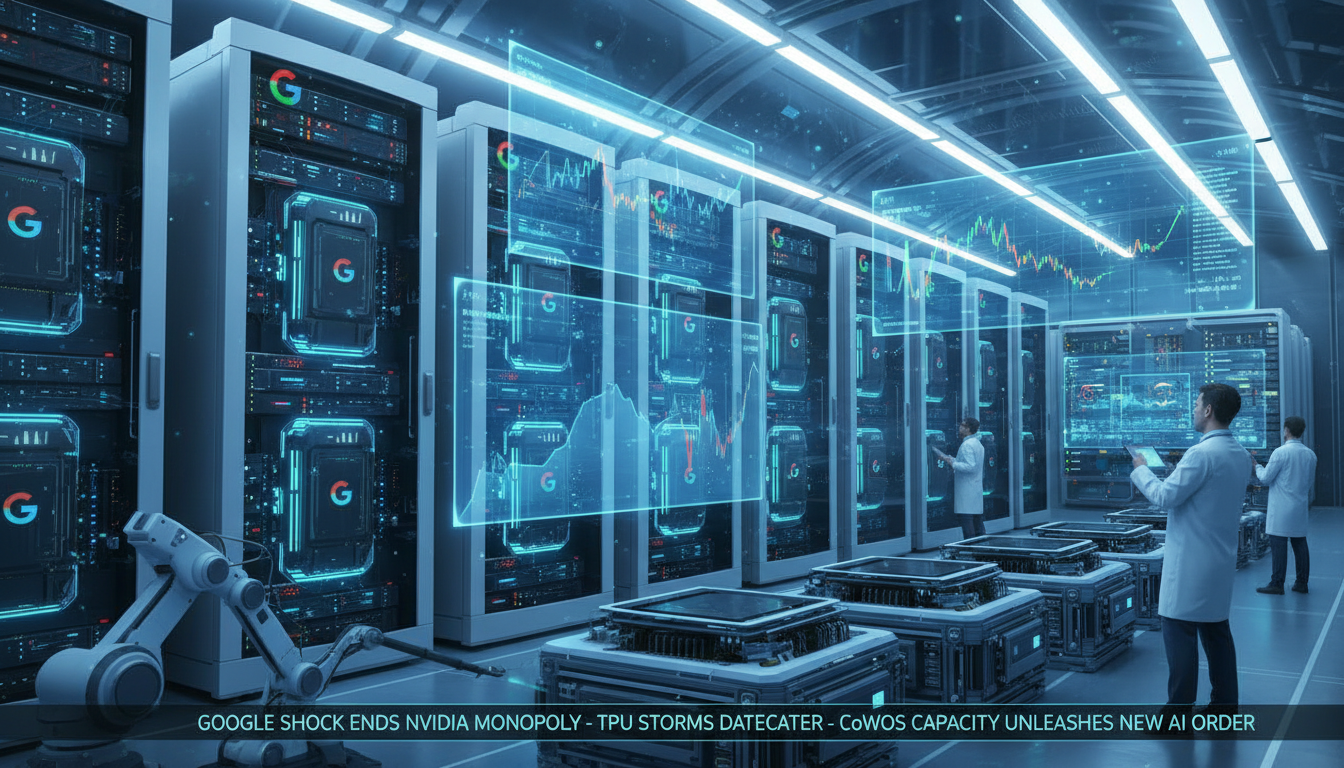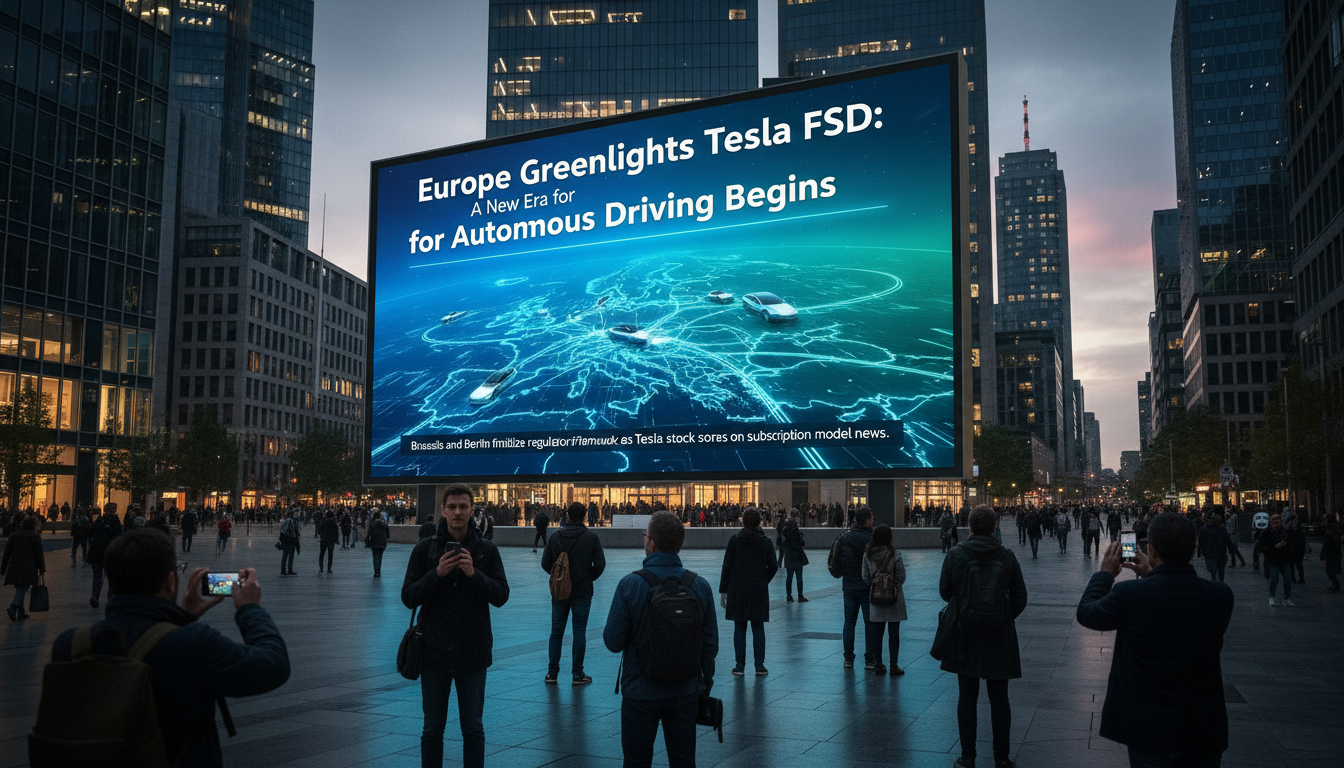● NVIDIA Reign Endangered, Google TPU Powergrab, Supply Chain Chaos
Has Nvidia’s Season Ended? An Explanation Focusing Only on the ‘Real Variables’ – From Google’s TPU On-Premises Strategy, Meta Rumors, to Developer Transition Costs
Today’s article contains these key points. – Why Google’s switch to on-premises TPU directly touches Nvidia’s moat. – The true meaning of the Meta/Anthropic deal rumors and the intervals of over- or underestimation in the stock market reaction. – How developer/infrastructure transition costs, hidden CAPEX factors such as CoWoS packaging, power, and cooling can change the game. – TSMC’s ‘dual strategy’ and the transmission path of downward pricing pressure. – The connection between interest rates, inflation, recession risks, and the AI semiconductor CAPEX cycle.
Summary for Today: Nvidia Down, Google Up, at the Crossroads of ‘Pro-Nvidia’ and ‘Pro-TPU’
While the Nasdaq index was steady, the trends among representative AI stocks varied. Nvidia fell, and Google rose. The background involved Google’s new AI model announcement and updates on training/inference based on TPU, as well as the transition strategy toward on-premises (direct installation in customers’ data centers). Market interpretation converged on “potential weakening of Nvidia’s monopoly,” with the pro-Nvidia chain (Nvidia, TSMC, memory) showing simultaneous weakness. An interesting point is that TSMC also fell, even though TSMC manufactures both Nvidia GPUs and Google TPUs, which on fundamentals could be seen as neutral. Nonetheless, in the short-term supply and sentiment perspective, the interpretation is that it was dragged down alongside the ‘Nvidia alliance’ narrative.
Google’s New Card: Expanding TPU On-Premises and Enhancing Developer Accessibility
While Google’s TPU had previously felt like it was only available on Google Cloud, it is now expanding to on-premises installations in customer data centers. This is an attractive proposition for companies holding sensitive data, those in regulated industries, and major tech companies that prefer self-operation. Google has improved software convenience by reinforcing PyTorch integration and introducing a TPU command center. Pricing competitiveness is TPU’s primary weapon. Ultimately, corporate IT will be judged on TCO (Total Cost of Ownership), leading to a comprehensive cost comparison including price, power, cooling, and operational expenses.
Meta/Anthropic Rumor Check: Not ‘Confirmed,’ But Already Shifting Pricing Negotiation Power
Reports indicate that Meta is reviewing the lease of TPUs from Google Cloud for 2026 and a massive installation in its own data centers starting in 2027. It is also known that there are discussions to use TPUs not only for inference but also for training. When Anthropic was linked to a massive TPU contract, Nvidia reportedly responded immediately with additional investments and a promise to supply GPUs. The key point is that although this exists only at the ‘rumor stage,’ it has already increased customer pricing negotiation power by raising expectations for diversified suppliers. This acts as a direct variable not only on the stock market but also on the CAPEX allocation in the global economy and the stock market valuation.
Nvidia’s Message: “We Are One Generation Ahead” vs. The Nuance Interpreted by the Market
Nvidia’s official account stated, “We are pleased with Google’s success, and we remain in supply, staying one generation ahead of the industry.” Although the tone is positive on the surface, the market interpreted the timing as a signal of competitive alertness. Jensen Huang’s keen observation of TPU trends and his sensitive response to key customer decisions have been noted on several occasions. In conclusion, this signals that Nvidia is also recognizing TPU risk as an ‘existential variable.’
Key Issue 1: It’s Not Just About Performance and Price, but Also the Ecosystem and Transition Costs Creating the Moat
Nvidia’s greatest moat is its CUDA ecosystem. Years of accumulated developer expertise, optimized libraries, toolchains, training, communities, and in-house best practices have created substantial switching costs. Even if TPU has become more PyTorch-friendly, model porting, performance tuning, and MLOps realignment require time and human resources. On the infrastructure side, new CAPEX and OPEX emerge in power (electricity costs), cooling (from air to liquid cooling), networking topology, rack density, and PUE management. These ‘hidden costs’ can partially offset the lower surface price. Therefore, a large-scale short-term transition is limited, and a hybrid adoption (part TPU, with the core remaining GPU-based) is the realistic scenario.
Key Issue 2: Packaging, Supply Chain, and TSMC’s ‘Indifferent Smile’
Both Nvidia GPUs and Google TPUs are affected by advanced packaging (such as CoWoS) bottlenecks. Since TSMC produces both, the structure remains such that “no matter who wins, TSMC wins.” It is reasonable to interpret the recent drop in TSMC’s stock as being driven more by sentiment and sector rotation rather than fundamentals. The critical point is that even if TPU expansion succeeds, packaging capacity and lead time constraints can still maintain a tight overall supply in the market. In other words, in the short term, a dual shortage scenario may coexist.
Evaluation of Market Reaction: Short-Term Overreaction, Medium-Term Reassessment Possible
Google’s improvements in model performance and TPU on-premises strategy are undoubtedly strong cards. However, considering developer/infrastructure transition costs and supply chain bottlenecks, the short-term impact on Nvidia’s performance is likely to be limited. Conversely, in the medium term, if pricing pressure and expanded customer choices materialize, the two-strong system between Nvidia and Google could become established. This will affect not only stock market valuations but also visibility of demand for semiconductor equipment and memory companies.
Points Other YouTube/News Outlets May Miss: What You Should Really Check
– Vendor Financing Signal: Reports that Google is pushing TPUs to mid-sized clouds with rental fee support imply more than aggressive sales; this is a strategy in which Google partly bears financing and risk to increase market penetration, serving as a potent market entry lever akin to price. – Internalization of SI Role: On-premises essentially means that Google intends to take on a systems integrator role to a certain extent. If design, installation, optimization, and SLA are involved, Google’s organizational structure and profitability profile will change. – Energy/Regulatory Edge: Massive on-premises TPU deployment is inherently linked to power permits, regional cooling infrastructure, and emission regulations. AI CAPEX is directly connected to the global power market, inflation (energy prices), and sensitivity to interest rates. – Redefinition of TCO: The key comparison will be a TCO analysis that not only considers hardware prices but also the software stack, operational automation, data governance, and security compliance costs. In this comparison, each company’s ‘hidden strengths’ will eventually be revealed.
Outlook by Scenario: Conditions for Transition from One Strong to Two Strong Competitors
– Scenario A (Short-Term): Major tech companies will maintain a GPU-centric approach while concurrently leveraging TPUs for some workloads. Rising pricing negotiation power may lead to a gradual decline in GPU prices, while supply tightness persists. – Scenario B (Medium-Term): If anchor customers such as Meta expand TPU usage to training, ecosystem trust will build and a two-strong structure will be cemented. With falling prices and diversified options, customer TCO will decrease, and the speed of model releases may actually accelerate. – Scenario C (Risk): Intensifying bottlenecks in packaging and power could delay progress for both. Delayed CAPEX deflation could lower ROI for some projects, leading to a readjustment in stock market valuations.
Investor Checklist: Verify with Data
– Actual ramp-up speed of on-premises TPUs by major customers (number of installed racks, power expansion contracts). – TPU optimization achievements in the PyTorch/open-source community and the pace of developer transition. – TSMC’s CoWoS capacity expansion, lead times, and packaging yield updates. – Changes in pricing policies and bundling (software credits, financing) by Nvidia and Google. – CAPEX data for power and cooling infrastructure, including utility connection queues. – Macro variables: how shifts in interest rate paths, inflation trends, and recession probabilities affect AI CAPEX and are reflected in stock market valuations.
One-Line Perspective: ‘Overreaction Now, Structural Change in the Medium Term’
Although there may be short-term stock price distortions, Nvidia’s moat (CUDA and its ecosystem) remains solid. However, Google’s combination of on-premises, pricing, and financing strategies has the potential to cement a two-strong system once fully implemented. Ultimately, the battle will be a comprehensive contest of performance, price, ecosystem, supply chain, and power infrastructure, with hybrid strategies likely becoming the norm. From a stock market perspective, it may go through a phase of ‘overreaction → reassessment,’ thereby opening selective opportunities across semiconductors and the broader stock market.
< Summary >
– Key news: Concerns over the weakening of Nvidia’s monopoly are highlighted by Google’s switch to on-premises TPU and the rumors of negotiations with major customers. – Interpretation: In the short term, Nvidia’s impact is limited, but in the medium term, the possibility of a two-strong structure and expanded pricing pressure increases. – Points: Nvidia’s CUDA ecosystem, developer/infrastructure transition costs, packaging bottlenecks, and power/cooling CAPEX will decide the contest. – Investment Check: TSMC’s CoWoS capacity, the actual ramp-up of on-premises installations, PyTorch-TPU optimization results, and changes in pricing/financing policies. – Macro Connection: Risks related to interest rates, inflation, and recession will regulate the pace of AI CAPEX and be reflected in stock market valuations.
This article is provided for informational purposes and does not constitute a buy or sell recommendation. Be sure to track global economic factors such as the economy, stock market, interest rates, inflation, and recession, alongside shifts in the AI semiconductor supply chain.
[Related Articles…] TPU On-Premises Era: Recalculating Power, Cooling, and TCO CoWoS Bottlenecks Are Determining AI CAPEX
*Source: [ 내일은 투자왕 – 김단테 ]
– 엔비디아 시즌 종료?
● Rate-Cut Rush, Google Seizes AI Crown, Capex Cliff Looms
[Breaking News·Key Summary] Private Employment -53K, Interest Rate Cut Probability Jumps to 85%, 3-Way Battle Among Google, Nvidia, and Musk, Including an AI Equipment Investment Peak-Out Scenario
This article covers the drastic slowdown in ADP private employment and the easing in September PPI Core that have raised expectations for an interest rate cut, the tectonic shift in AI dominance driven by Google’s TPU and Gemini 3, and the most important point that “if the winner is confirmed too early, semiconductor, power, and data center investment cycles could slow down.”
It quickly summarizes the direction of the US stock market, AI competitive dynamics, semiconductor order cycles, recession risks, and the timing of an interest rate cut in a news-style format.
1) Breaking Points: Employment, Prices, and Interest Rate Triggers
In the private sector, ADP recorded an average decline of 13,500 jobs per week over the past four weeks, estimated to be about -53,000 monthly.
This is a marked weakening compared to the -2,500 per week from the previous week, and it is more indicative of “growth deceleration under disinflation” rather than an impending recession.
Betting on an interest rate cut by the Fed has been raised to about 85% based on the Padwatch index, which could re-ignite a short-term decline in short-term rates, a weaker dollar, and an expansion of growth stock multiples.
The September PPI showed a headline of +0.3% month-over-month and +2.7% year-over-year, with core PPI at +0.1% month-over-month and +2.6% year-over-year, generally in line with or below expectations.
The slowdown in core producer prices can be interpreted as positive for easing CPI pressures and protecting corporate margins.
In summary, with rising expectations for an interest rate cut, this combination is short-term supportive for technology stocks and long-duration assets in the US stock market.
2) AI Dominance Reshuffle: Is the Lead Shifting from Nvidia to Google?
Google (Alphabet) is accelerating vertical integration with its own TPU, data centers, and model (Gemini 3), emphasizing its cost and energy efficiency advantages.
The policy of opening up the TPU ecosystem to external customers could accelerate the expansion by “cloudifying AI computing” services.
On the other hand, Nvidia still retains a strong moat based on its CUDA ecosystem, H100/B100 roadmap, and a vast developer community that combines software and hardware.
Musk has declared a direct challenge, stating that Grok will take the top spot by January next year, and OpenAI is also expediting next-generation models and expanding partnerships.
The conclusion is that while “a shift in advantage is evident,” it is not yet a stage of confirming a winner, and the AI competition is poised to intensify further.
3) News Summary
- Employment: Based on ADP, the recent 4-week average fell by 13,500 per week, roughly -53,000 monthly in private employment.
- Interest Rates: The probability of an interest rate cut has risen to about 85%, favoring long-duration and growth stocks.
- Prices: September PPI headline at +0.3% m/m and core at +0.1% m/m, maintaining a disinflation trend.
- AI Landscape: Google’s TPU and Gemini 3 gain prominence, Nvidia’s ecosystem moat remains solid, and Musk challenges with Grok for the top spot.
- Market Implication: While tech and semiconductor strength may re-ignite, there remains a risk that early winner confirmation could lead to a slowdown in equipment investment cycles.
4) The Most Important Point Often Overlooked Elsewhere
The paradox of an early winner confirmation scenario: if the competition ends too quickly, large-scale equipment investments will also decelerate prematurely.
In this case, the order cycles in semiconductors (especially HBM and CoWoS packaging), foundries, AI servers, data center power expansions, cooling and distribution, and even real estate (REITs) could flatten out.
If Google fully opens up its TPU to the external market, “AI computing” may shift to a cheaper subscription-based model, which could readjust the pricing power and margin structure of GPUs.
The key is not “models that win benchmarks,” but rather “the combination of cost per token (TCO), latency, reliability, and security,” which determines corporate adoption.
By 2025, as the inference share grows relative to training, competition in memory bandwidth, power efficiency, and software optimization will become the turning points for profitability.
If employment and core PPI slow down further, boosting interest rate cut expectations, valuations could be supported; however, if there is a risk of an AI equipment investment peak-out, profit estimates may be revised downward.
5) Investment Checklist: What to Watch Now
In the absence of the official employment report, track trends through weekly unemployment claims, wage trends, JOLTS, and the ISM services employment index.
The Fed’s communications and changes in the timing of an interest rate cut will steer sector rotation in the US stock market.
Examine the hyperscalers’ 2025 CAPEX guidance for the “training-to-inference” ratio, the pace of adopting in-house chips, and the external sales strategy.
Key variables for tracking the actual cost reduction in AI computing are the cloud GPU/TPU hourly rates, reserved instance pricing, and trends in long-term contract commitments.
Within the semiconductor value chain, monitor HBM capacity expansions (Samsung, SK Hynix, Micron), packaging capacities for CoWoS and FOPLP, and constraints in the power and cooling supply chain.
6) Risks and Counterarguments
ADP is an estimate for the private sector, and there may be discrepancies with the official BLS employment figures, so it is premature to conclude a recession solely based on short-term numbers.
PPI is a lagging indicator, so the strength of its transmission to CPI and PCE needs to be verified.
If the AI winner remains undetermined, it could lead to “overlapping investments” that may extend the semiconductor cycle even further.
7) Strategic Interpretation: A One-Line Conclusion
It is time to ride the momentum of an interest rate cut, but if signals of a change in the AI equipment investment cycle (such as in-house chip proliferation, drops in compute rates, and changes in the CAPEX mix) emerge, one must quickly re-evaluate expectations for semiconductor and data center-related stocks.
< Summary >
- ADP private employment slowdown and a decline in core PPI have increased the probability of an interest rate cut to 85%.
- Although Google’s TPU and Gemini 3 are shaking up the AI landscape, the winner has not yet been determined.
- An early confirmation of a winner could lead to an AI equipment investment peak-out and a slowdown in cycles for semiconductors, power, and data centers.
- Short-term: technology stocks benefit from easing interest rates; Mid-term: profitability will hinge on changes in the CAPEX mix and the cost curve.
[Related Articles…]
- The Fed’s Interest Rate Cut Timeline and the Reassessment of Tech Stock Valuations
- TPU vs GPU: How Google’s Vertical Integration Strategy Affects the Semiconductor Cycle
*Source: [ Maeil Business Newspaper ]
– [속보] 한달새 민간고용 5만여개 순감. 엔비디아에서 구글로 패권은 넘어간건가 I 홍장원의 불앤베어


